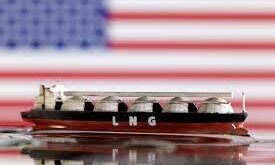There can hardly be any doubt that President Trump is determined to make good on his campaign promises. which made the energy industry a top priority. After opening up more federal lands to drillers and coal miners. and making public its plans to allow drilling in the Arctic. the Trump administration has begun a review of 11 marine sanctuaries to consider opening them for oil and gas drilling.
While industry groups like the American Petroleum Institute have only had praise for the new administration’s initiatives so far. this time reactions are more lukewarm. No one has forgotten the months-long protests against the Dakota Access pipeline or the activist shareholder pressure that Exxon bent under regarding its refusal to acknowledge climate change and the role of the oil industry in it.
Likewise. it’s not too difficult for Big Oil to imagine the public and shareholder backlash against any oil company bold enough to drill in a previously protected offshore area. It seems that for most U.S. oil players. it’s just not worth the public relations nightmare that would undoubtedly ensue.
This wariness is impressive. because the potential reward is big: The Bureau of Ocean Energy Management estimates that the Pacific Offshore Continental Shelf may contain up to 10 billion barrels of oil. Greenpeace says that two of the national marine sanctuaries that are subject to review may contain 3.41 billion barrels of crude and 3.62 trillion cubic feet of natural gas.
But it’s not just public relations concerns that have led to the lukewarm reaction of the energy industry to the sanctuary review. Offshore drilling in new. untapped areas simply doesn’t make much economic sense. While there may be billions of barrels of oil in the ocean. it will take also billions of dollars to confirm exactly where they are and to start producing. Offshore drilling is a costly affair. especially when you’re drilling somewhere new.
Reuters quoted the president of the Western States Petroleum Association as saying that “Our members are not currently pursuing this opportunity.“ Some of these members are Exxon. ConocoPhillips. BP. and Chevron. all with a substantial offshore presence. But why venture into new waters when you can expand your operations in the Gulf of Mexico and. of course. on land in the shale patch?
Last week. Exxon won the rights to develop 10 offshore blocks in Brazil. Chevron recently sealed a deal with France’s Total to partner on GoM exploration in seven prospects. BP is focusing on further cost cuts in its offshore operations. In short. Big Oil seems to be a bit too busy elsewhere to have the time or money for new offshore projects at the moment.
They may have been more interested if the review opened entire sanctuaries. But the review only concerns expansions current areas—wide areas. no doubt. but not as wide as they could have been if we adopt an extremely oil-hungry perspective.
Interestingly. oil and gas isn’t the only industry set to potentially benefit from the opening of protected offshore areas. Wind power producers could also expand. but they don’t want to. like Big Oil. According to the American Wind Energy Association. the industry has no problem with the current size of the sanctuaries and isn’t interested in setting up turbines on their territory—it’s expensive and controversial.
Based on all this. it seems that the marine sanctuary designations review only serve as a symbolic gesture of support toward the oil industry. A good one. but still just a symbolic one.

 Iran Energy News Oil, Gas, Petrochemical and Energy Field Specialized Channel
Iran Energy News Oil, Gas, Petrochemical and Energy Field Specialized Channel



